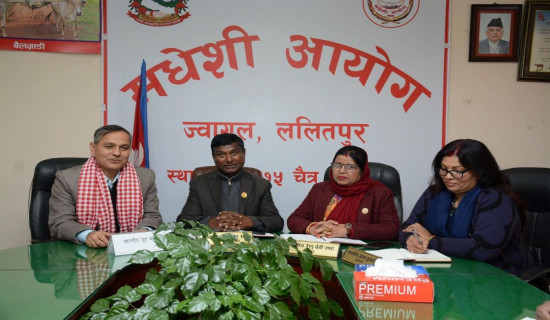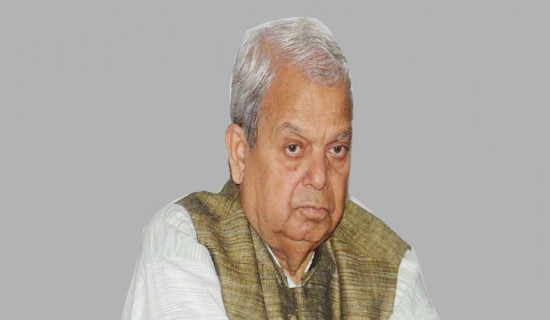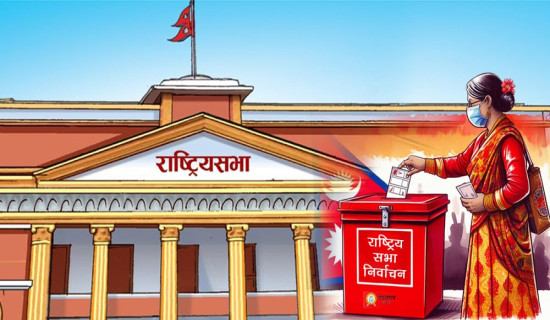- Wednesday, 7 January 2026
Local Governance In Federal System
Major political parties, especially the Nepali Congress and the CPN-UML, had not been convinced that the federal architecture of the state would ever suit and function properly in Nepal. When the issues relating to the state restructuring were being debated in the constituent assembly for writing the democratic federal constitution about a decade ago, key party leaders were instead busy venting their reservation on the federalist agenda. They had not given due attention to the constituent assembly deliberations, nor did they seem to be serious enough on its details. Kathmandu-based elites, bureaucracy and professionals barring a few were not reconciled to the federal recasting of Nepal. It was argued that a country of the miniscule demographic and geographic size, which has, among others, at least seven times less population than that, for example, of Uttar Pradesh of India could also be suitably administered and managed through unitary arrangements.
Skepticism
Such a geographic size would not be feasible for federal reorganisation, they argued, as the Nordic countries in the northwest Europe despite their unitary governance arrangement have achieved high level of human development and egalitarian order. However, despite their reluctance and skepticism they had got along with the pro-federalist forces-- the Maoists and Madhes-based political groups-- to write the constitution and introduce federal polity in the country. It is interesting to note that even today the parties and groups like the right leaning Rastriya Prajatantra Party (RPP) and the left leaning Rastriya Jana Morcha (RJM) voice their opposition to federalisation of Nepal. These groups stress on the need to roll back the federal scheme through an amendment to the constitution. They do contend that strong decentralised governance system could prove to be more efficient and effective than today's resource guzzling, expensive and on top of that very ineffective provincial architecture.
Though the province structure– the intermediary entity– has been considered to be the necessary component of the three tiered federal structure, it has indeed become an anathema because of its poor performance and delivery even as heavy resource is pumped in and involved in its organisational operation and maintenance. Some senior political leaders oftentimes do articulate their critical note on the federal state reorganisation, and join in with the political cacophony that provinces require to be removed from federal scheme of Nepal. Despite the criticisms meted out to the provincial governments because of their lackluster performance over the last five years, local governments– municipalities and rural municipalities-- have won all praise of their constituents and stakeholders for their above the average performance and delivery.
Moreover, their delivery during the adverse situation like COVID-19 has established them as the mainstay of the democratic federal polity. The most important and vital outpost of the local governments in Nepal have been the ward committees that deliver almost all public amenities and services as the vital neighborhood governance institution having a sustained, proximate and living contacts with people. For the ordinary people whether in the urban or rural municipalities, who heads their ward committee matters more as the mayors/ deputy mayors are too remote and farther to access and connect for delivery of civic amenities and services.
The federal constitution has reorganised Nepal into seven provinces, 753 local governments and around 6,400 wards. The ward committees, unlike the wards in such countries as India and South Africa, are constitutionally recognised as a distinct indissoluble and indestructible status. Needless to say, local governments in Nepal are constitutionally protected and appear to be more resilient than the province structure. According to the constitution, the local governments can neither be suspended nor dissolved whereas province governments can be dismissed on certain grounds. The local governments like the federal and provincial governments exercise state authority as provisioned in the constitution and their functional mandates and competencies are defined in the exclusive and concurrent lists.
The constitution allots exclusive functions to local governments ranging from local taxes to handling education, health, drinking water, road, agriculture, irrigation, cooperatives, environment conservation and so on. The Natural Resources and Fiscal Commission, a permanent constitutional entity, assesses the expenditure needs and capacity of each and every local government unit. The equalisation grants are allocated to the local governments as untied fiscal transfers whereas conditional, matching and special grants are also allocated to meet the local development and service delivery obligations.
Fiscal autonomy
Local government units in Nepal are in a much more comfortable position from fiscal autonomy point of view than the local governments in many other countries in South Asia, including India. In India, according to Dr. Kaustuv Bandhopadhyaya, a globally reputed local governance expert associated with PRIA, the Delhi-based civil society think tank organisation, local governments’ fiscal space is very much tied as the share of the conditional grants is so dominant that the local government institutions have no any fiscal leverage worth the name to plan and use resources in an autonomous manner. India’s Panchayat Raj Institutions receive grants from the Union Government based on the recommendations of the Central Finance Commission in line with provision of the constitution.
Similarly, the local government institutions receive grants from the state government based on the recommendations of the State Finance Commission. According to Dr. Bandhopadhyaya, the volume of the resources the local government institutions receive has increased significantly but they are treated as the implementing arms of the central and state governments. However, the situation in Nepal is better as they have asserted their role as the third sphere of the federal government through several problems are yet to be sorted out. With more untied resources at the disposal of the local governments in Nepal, the cases of misuse and misappropriation have increased in worrying proportions during these days.
(The author is presently associated with Policy Research Institute (PRI) as a senior research fellow. rijalmukti@gmail.com)















